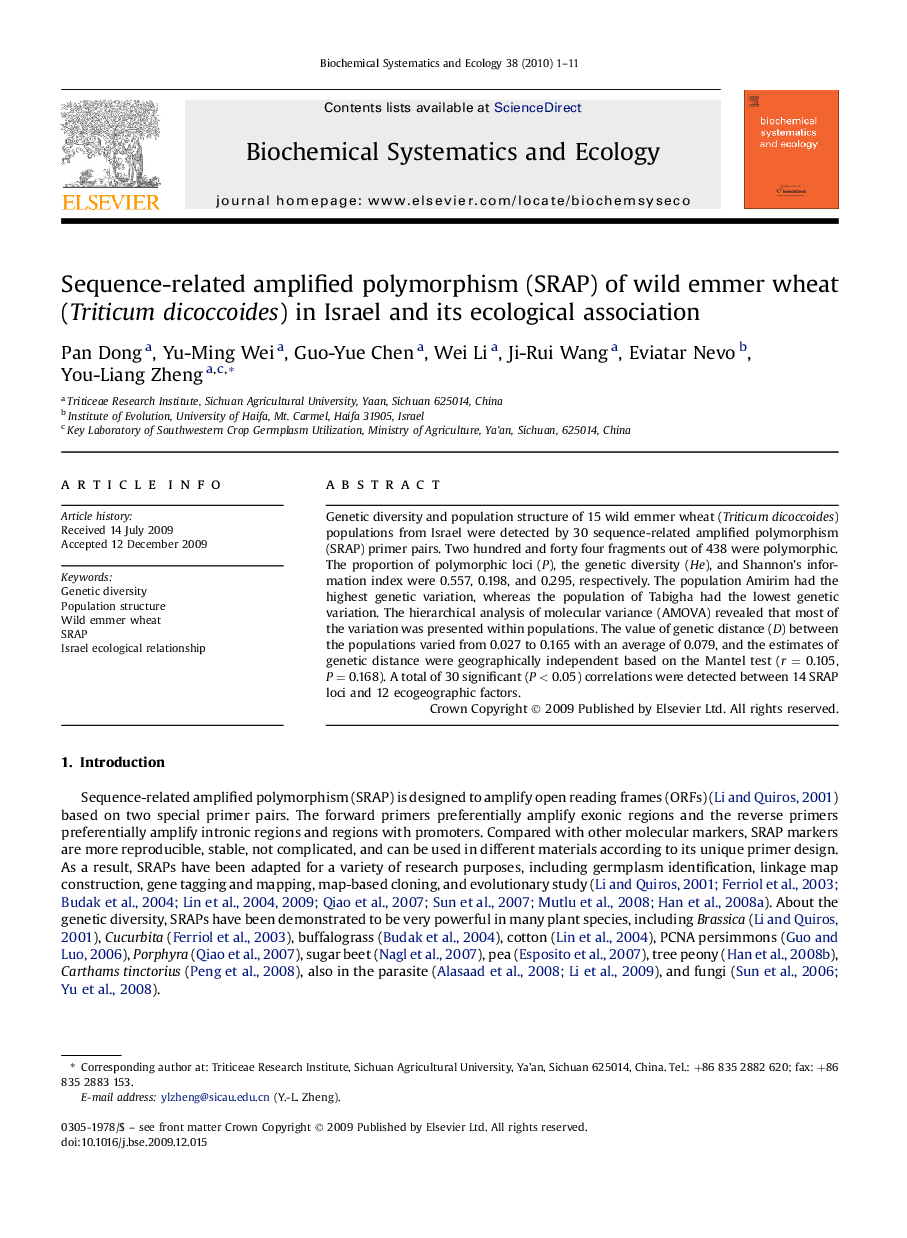| کد مقاله | کد نشریه | سال انتشار | مقاله انگلیسی | نسخه تمام متن |
|---|---|---|---|---|
| 1354486 | 980742 | 2010 | 11 صفحه PDF | دانلود رایگان |

Genetic diversity and population structure of 15 wild emmer wheat (Triticum dicoccoides) populations from Israel were detected by 30 sequence-related amplified polymorphism (SRAP) primer pairs. Two hundred and forty four fragments out of 438 were polymorphic. The proportion of polymorphic loci (P), the genetic diversity (He), and Shannon's information index were 0.557, 0.198, and 0.295, respectively. The population Amirim had the highest genetic variation, whereas the population of Tabigha had the lowest genetic variation. The hierarchical analysis of molecular variance (AMOVA) revealed that most of the variation was presented within populations. The value of genetic distance (D) between the populations varied from 0.027 to 0.165 with an average of 0.079, and the estimates of genetic distance were geographically independent based on the Mantel test (r = 0.105, P = 0.168). A total of 30 significant (P < 0.05) correlations were detected between 14 SRAP loci and 12 ecogeographic factors.
Journal: Biochemical Systematics and Ecology - Volume 38, Issue 1, February 2010, Pages 1–11